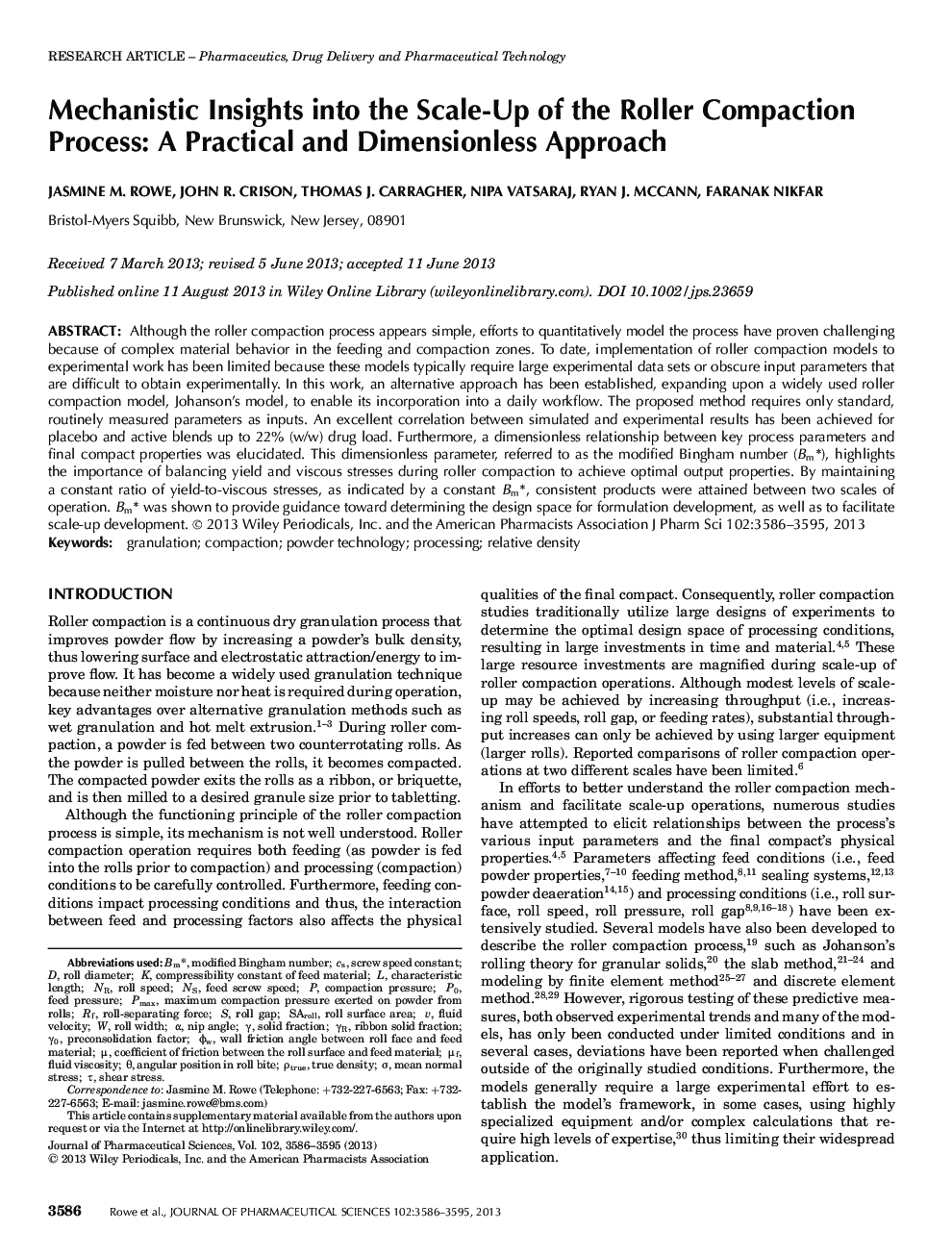| Article ID | Journal | Published Year | Pages | File Type |
|---|---|---|---|---|
| 10162522 | Journal of Pharmaceutical Sciences | 2013 | 10 Pages |
Abstract
Although the roller compaction process appears simple, efforts to quantitatively model the process have proven challenging because of complex material behavior in the feeding and compaction zones. To date, implementation of roller compaction models to experimental work has been limited because these models typically require large experimental data sets or obscure input parameters that are difficult to obtain experimentally. In this work, an alternative approach has been established, expanding upon a widely used roller compaction model, Johanson's model, to enable its incorporation into a daily workflow. The proposed method requires only standard, routinely measured parameters as inputs. An excellent correlation between simulated and experimental results has been achieved for placebo and active blends up to 22% (w/w) drug load. Furthermore, a dimensionless relationship between key process parameters and final compact properties was elucidated. This dimensionless parameter, referred to as the modified Bingham number (Bm*), highlights the importance of balancing yield and viscous stresses during roller compaction to achieve optimal output properties. By maintaining a constant ratio of yieldâtoâviscous stresses, as indicated by a constant Bm*, consistent products were attained between two scales of operation. Bm* was shown to provide guidance toward determining the design space for formulation development, as well as to facilitate scaleâup development.
Related Topics
Health Sciences
Pharmacology, Toxicology and Pharmaceutical Science
Drug Discovery
Authors
Jasmine M. Rowe, John R. Crison, Thomas J. Carragher, Nipa Vatsaraj, Ryan J. Mccann, Faranak Nikfar,
